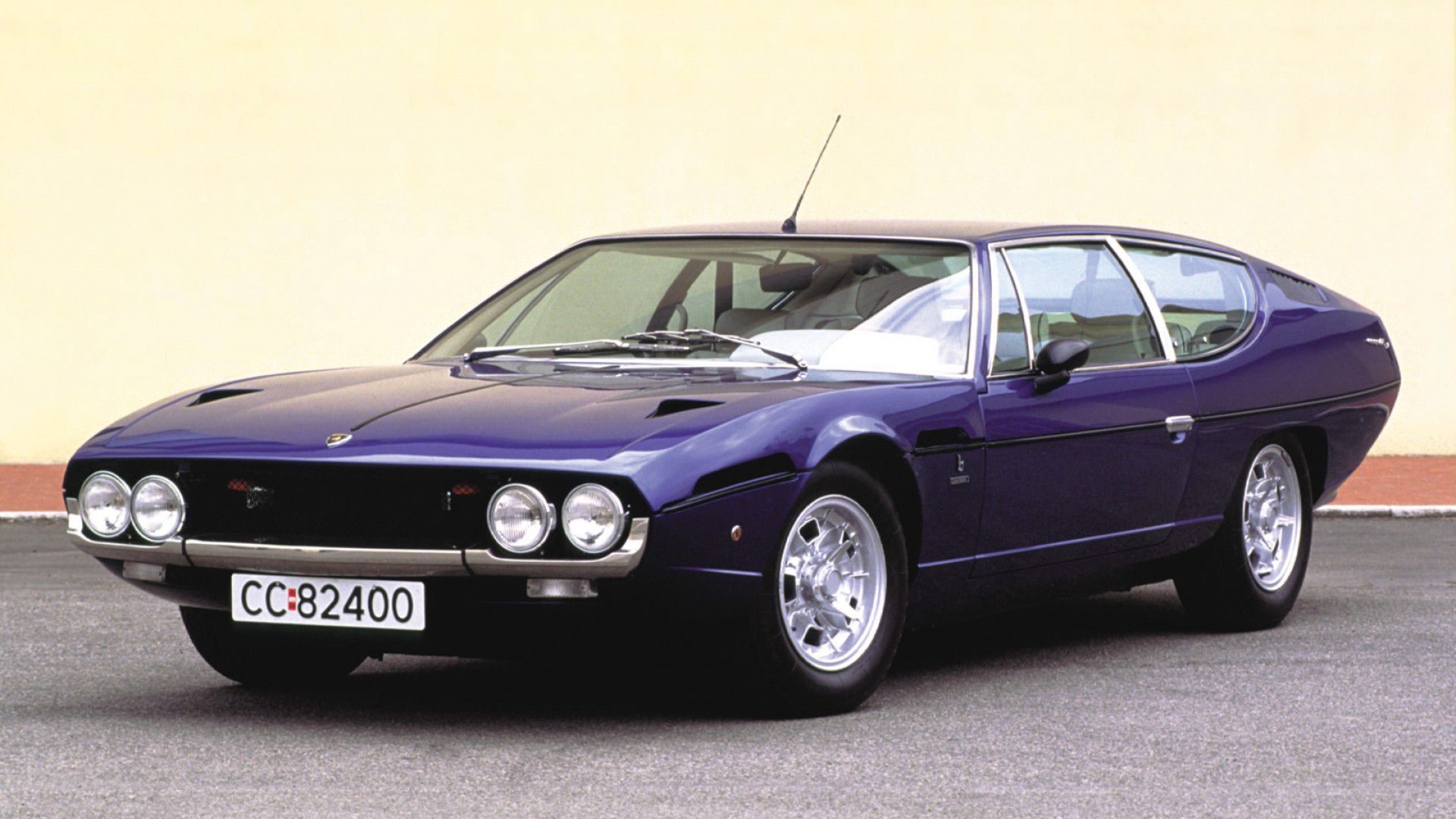Lamborghini Espada
The Lamborghini Espada is a four-seat coupe. It was built in 1968-1978 by Lamborghini in Italy. The Espada Lamborghini twelve-cylinder engine combined with an independent hatchback body, which is considered a milestone in automotive design. In addition to the Countach the Espada is the most successful model of the company. The model name Espada is Spanish and refers to the sword which the matador uses a bullfight.
The factory internally as Tipo 108 designated Espada was after the 350 GT GT/400, the Islero and the Miura, it was the fourth model in the brand founded in 1963. As the first full four-seater Gran Turismo, it was the result of Ferruccio Lamborghini’s efforts to offer a wide product range. The Espada was developed in three series. Overall, Lamborghini produced 1217 copies of the coupe.
The production of the Espada was set in 1978, when there was Lamborghini in economic difficulties. At the time, Lamborghini had high debt to Zuliefern, including at Bertone where the body was made. Lamborghini concentrated in the subsequent period to the Countach, the unlike the Espada was almost entirely manufactured in our own factory and threw profit.
The body of the Espada was designed by Bertone. Designer Marcello Gandini was executive. The design is an evolution of two designs that Bertone had presented to the public in 1967. In many representations Bertone Lamborghini Marzal concept car is called the immediate predecessor of the Espada. In fact, the Espada, only the side profile has with this mid-engine coupe that had extensively glazed double doors in common. Significantly larger Similarity to the Bertone Pirana, a front-engine coupe, which was developed on the basis of the Jaguar E-Type. So the body of the first Espada prototype was sharpened on the wooden form of the Pirana.
The Espada, notwithstanding its height of only 118 cm a full four-seater. A special design feature of the flat extending rearward rear window, which serves as a boot lid at the same time. At its end, an upright second rear window is housed in order to improve the rear view. A similar design feature showed up later at also designed by Gandini Maserati Khamsin, but also the Honda CRX and the Citroën XM.
The body made of steel plate, only the hood was made of aluminum.
The Lamborghini Espada came in the same year on the market like the Lamborghini Islero, the technique of both models is identical to a great extent.
The Espada was originally fitted with a 239 kW (325hp) twelve-cylinder V-engine with 4-liter displacement. He had independent suspension and four disc brakes. Most Espada were provided with a manual transmission. It was also one of the first automatic offered that was able to withstand the torque of a V12 engine. It had an unusual transmission design with the three stages: drive, 1 and reverse.
The production of the Espada was outsourced to a large extent. The chassis and the frame structure was prepared at the Carrozzeria Marchesi in Milan, the body was built by Bertone in Turin. Only after Bertone had put the body on the frame and built the interior, the vehicles were transported to.. Sant’Agata Bolognese, where Lamborghini mechanic the engine, transmission and suspension installed
The Espada was founded in 1968 at the Geneva Motor Show.
During his ten-year production period of the Espada was subject to some changes. Three different models were produced in total. These were the S1 (1968-1970), the S2 (1970-1972) and the S3 (1972-1978). Each model generation had an improved engine. On the outer form only a few details have been changed. The interior changed dramatically with each model change. A completely new dashboard and steering wheel was installed in the S2. The Interior has been changed for the S3 one more time. 1970 power steering was offered as optional equipment. In 1974 the automatic transmission was offered. 1975 shock-absorbing bumpers were introduced in order to meet safety regulations in the United States.
In the early 1970s, Bertone drew a four-door version of the Espada; However, mass production is not surrendered. Pietro Frua in 1978 constructed on the basis of an extended Espada chassis the four-door Lamborghini Faena, of which a copy was made. Frua Faena and Lamborghini presented the 1978 and 1980 made public. A series production, however, came here not materialize. The Faena still exists.
V12 engine with a manifold and air compressor
Aktuelle Modelle: Aventador | Hurricane Special Editions: Sesto Elemento | Poison | Aventador J
Historische Modelle: 350 GT | 350 GTV | 400 GT | Countach | Diablo | Espada | Gallardo | Islero | Jalpa | Jarama | LM002 | Miura | Murcielago | Silhouette | Urraco
Concept Cars: Calà | Egoista | Estoque | Genesis | Marzal | P140 | Urus
155325
